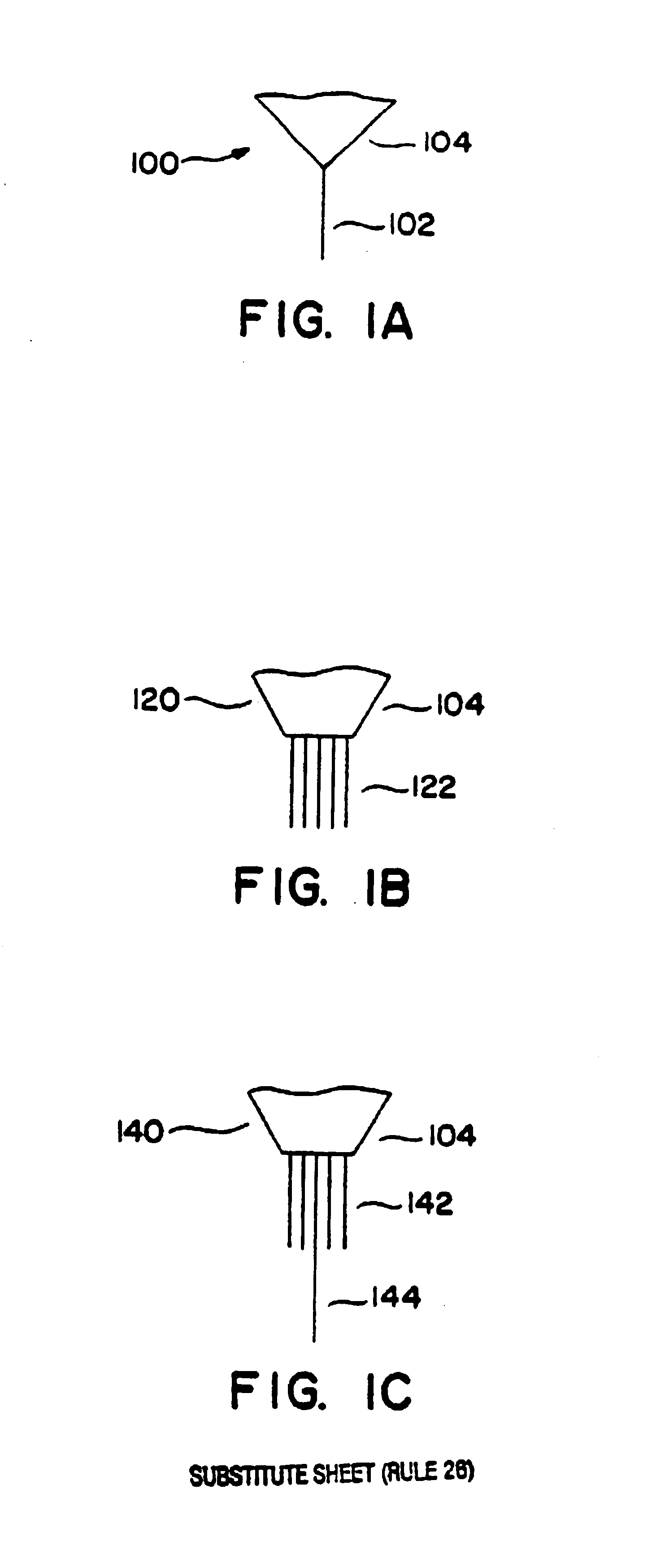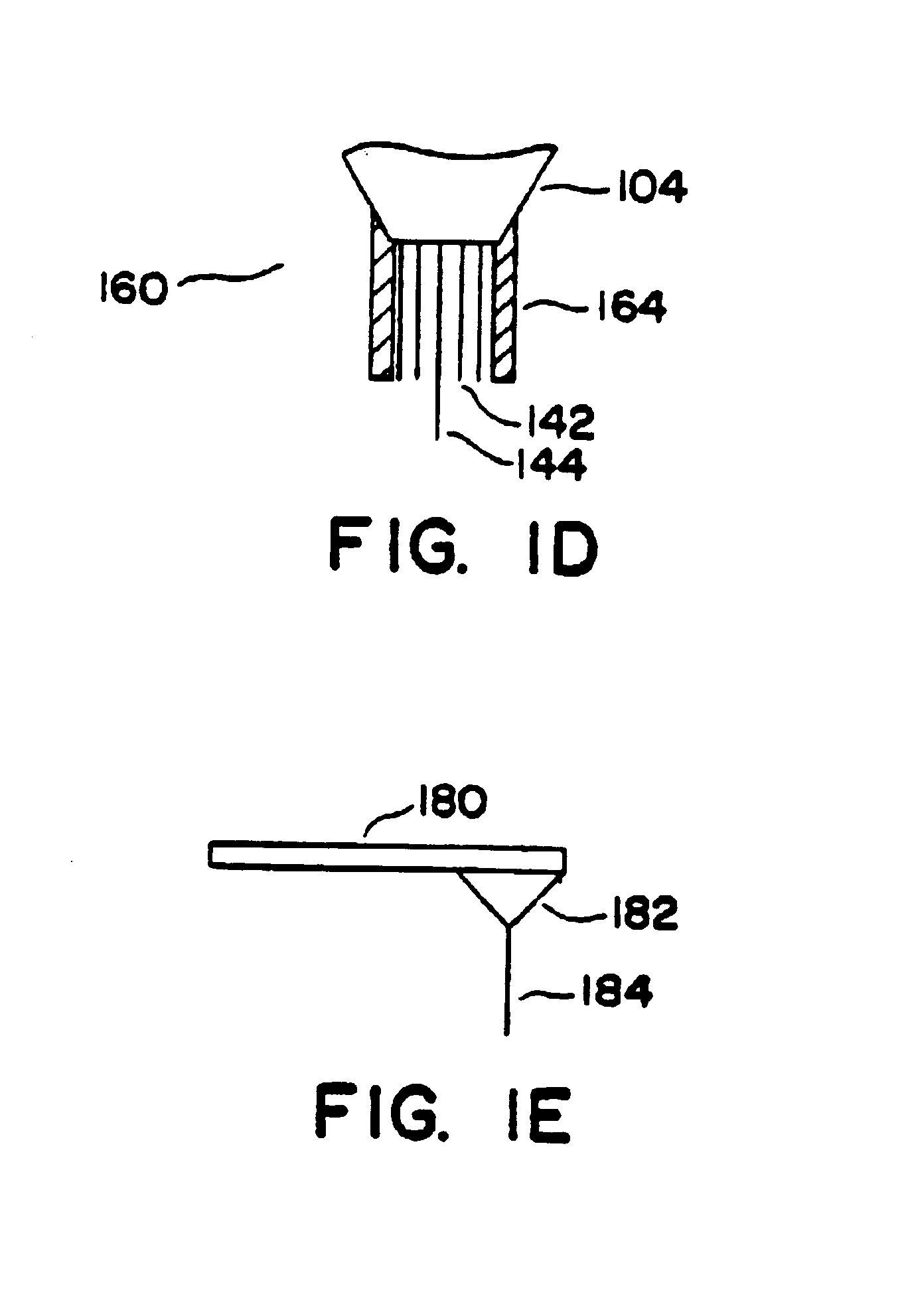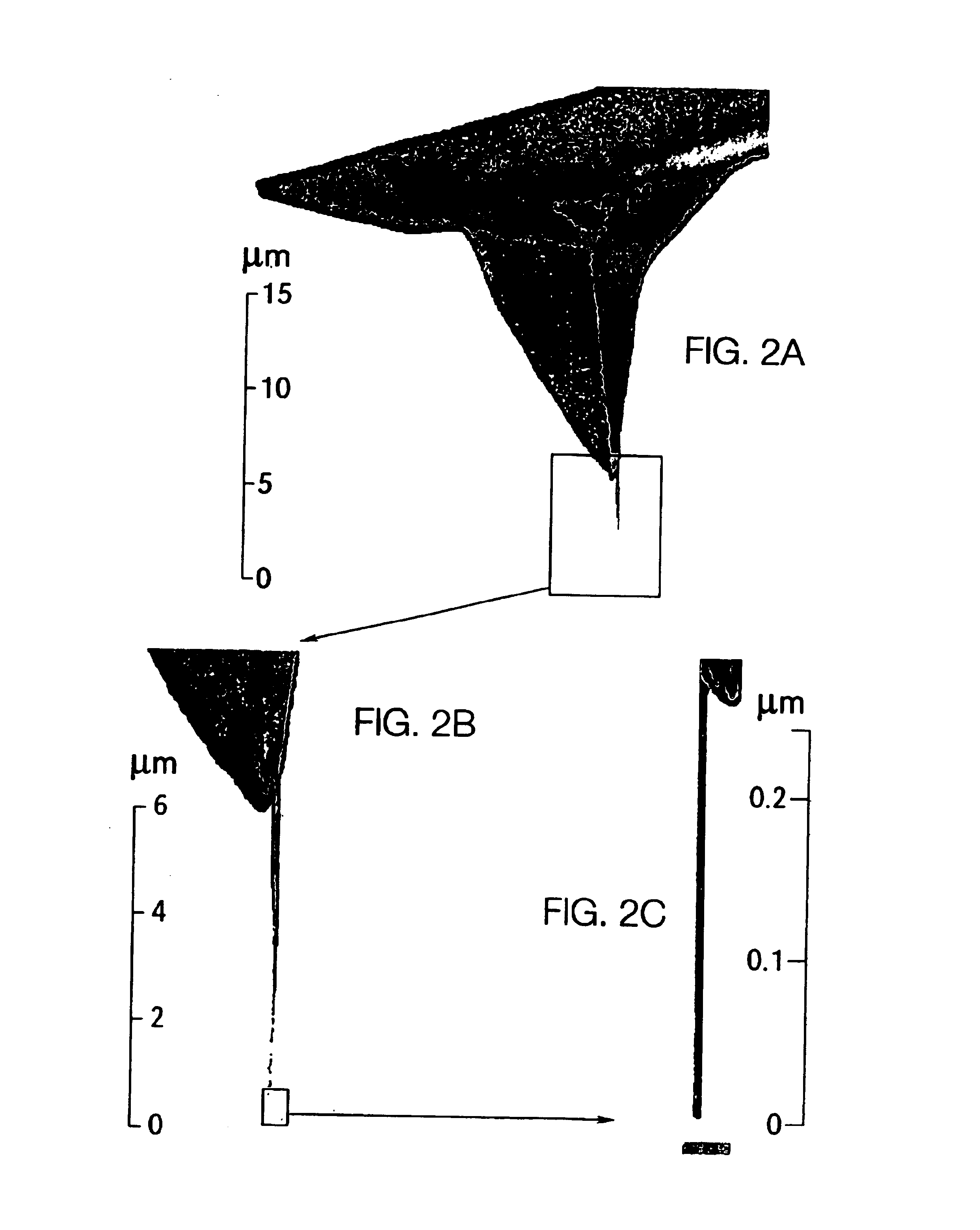Method of forming composite arrays of single-wall carbon nanotubes and compositions thereof
- Summary
- Abstract
- Description
- Claims
- Application Information
AI Technical Summary
Benefits of technology
Problems solved by technology
Method used
Image
Examples
Embodiment Construction
[0034]The preferred embodiment of the present invention and its advantages are best understood by referring to FIGS. 1 through 13 of the drawings, like numerals being used for like and corresponding parts of the various drawings.
[0035]Macroscopically Manipulable Nanoscale Devices
[0036]Broadly, the macroscopically manipulable nanoscale devices of the present invention comprise a nanotube assembly attached to a mounting element that permits macroscopic manipulation or observation. In a preferred form this device comprises a nanotube probe tip assembly made up of one or more single-wall and / or multi-wall nanotubes. This assembly is connected to a mounting element at one end, with the other end being free and capable of coming into direct contact or near proximity to the object being sensed, measured, an, moved, manipulated, and / or modified. The free “sensing end” has a transverse dimension in the nanometer range. The “sensing end” interacts with objects being sensed, measured, analyzed...
PUM
 Login to View More
Login to View More Abstract
Description
Claims
Application Information
 Login to View More
Login to View More - R&D
- Intellectual Property
- Life Sciences
- Materials
- Tech Scout
- Unparalleled Data Quality
- Higher Quality Content
- 60% Fewer Hallucinations
Browse by: Latest US Patents, China's latest patents, Technical Efficacy Thesaurus, Application Domain, Technology Topic, Popular Technical Reports.
© 2025 PatSnap. All rights reserved.Legal|Privacy policy|Modern Slavery Act Transparency Statement|Sitemap|About US| Contact US: help@patsnap.com



